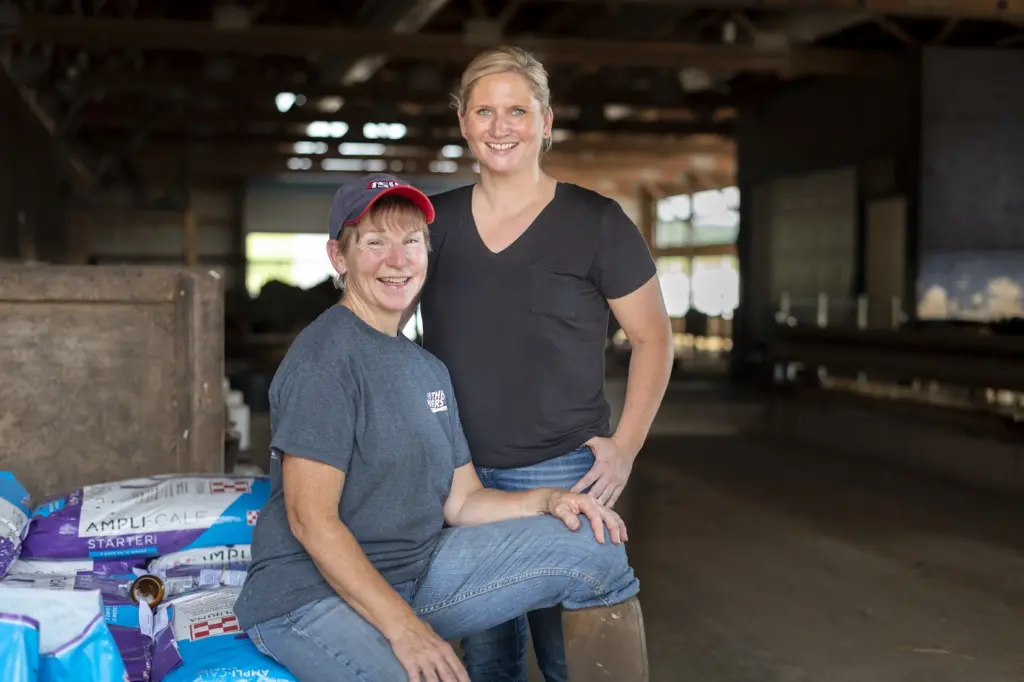The beautiful rolling hills of eastern Iowa not only make it a great place to farm, but they’re also a gorgeous invitation for the people raised there to remain in, or at least return to, the area.
In 2017, Megan Kregel was the last of her siblings to come back to work at and live near the dairy farm on which she grew up in Guttenberg, less than 10 miles north of the Turkey River and 10 miles west of the mighty Mississippi. Megan’s daily duties now revolve around transitioning cows — everything from young calves to full-grown cows getting ready to give birth. Five years ago, there were 250 total cows, but the herd has grown to 400. That’s due to an innovative expansion her parents, Gary and Darlene Kregel, undertook when it was looking like all of their kids would make their homes and livelihood together in Guttenberg.
Realizing that supporting everyone would mean more cows and more infrastructure, the Kregels built a new barn and installed robotic milking machines that brought more flexibility to the laborious work. Every time the cow enters the robot, the farm collects more than 120 real-time data points, which are viewable on the computer in the facility or via a mobile app when the family is away from the farm.
“I credit my parents a lot; they’ve always been willing to take a chance,” said Megan. “They didn’t know what our choices would be in the future, and they wanted to keep farming available to us as an option.”
Megan remembers riding her bike in and around the tie-stall barn that the family still has on the property. Then they built the farm’s first milking parlor in the 1990s. The family has seen the full gamut of change with the 2014 move to the new, robot-equipped facility that also includes lime-covered water beds and brushes that massage cows’ backs. The natural environment has benefited from gradual changes, too. New manure separators turn some of the cows’ waste into solid substances used for bedding. The farm grows corn and soybeans and integrates cover crops on its acres, which eliminates the need for tilling while also reducing their carbon footprint.
“We used to have all types of livestock here like so many farms had in the 1980s — nobody was as specialized as they are now,” explained Megan. “Dairy seemed like the most viable option for our family as we grew. It’s crazy how have things have changed, but everything has been for the betterment of us, the cows, and the environment. And we get to produce this wholesome and nutritious product for people to enjoy in so many different forms.”
